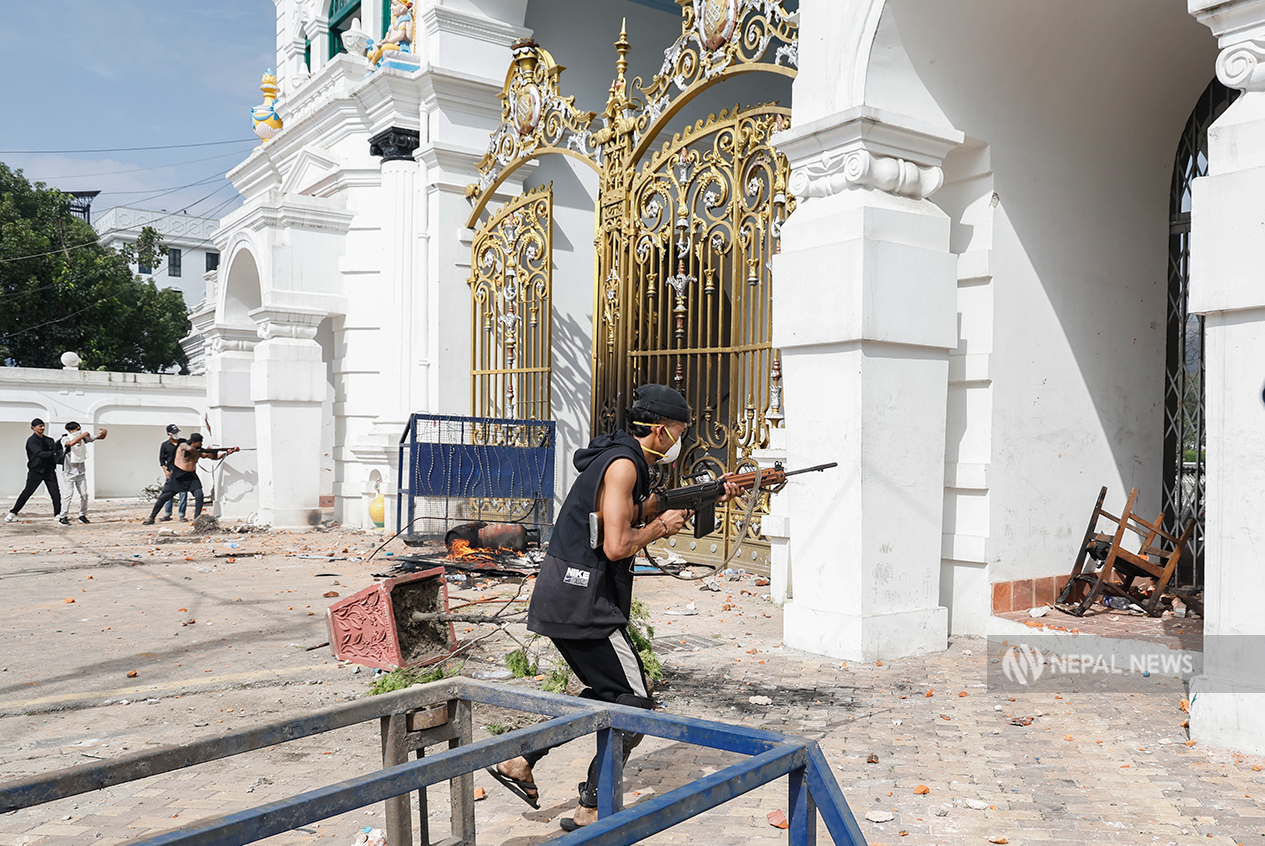
Police scramble to recover arms as public fear grows

KATHMANDU: On September 9, 2025, the second day of the Gen-Z movement in Nepal, protesters overran the Kathmandu Valley Police Office in Ranipokhari and looted a large cache of weapons after police forces retreated. The mob broke into the armory, seizing rifles, pistols, tear gas canisters, and ammunition.
Although the exact number of stolen weapons is yet to be confirmed, an official from Police Headquarters estimates around 500 large weapons and 1,000 pistols were looted from the Valley Police Office alone. “We’ve asked for a detailed inventory, but the office hasn’t been able to provide it yet,” the official said.
According to headquarters records, 150 large weapons were stolen from other police circles within the Valley, of which 124 have been recovered so far.
Types of weapons looted
Among the stolen firearms are SLRs, INSAS rifles, .303 (Three-n-Three) rifles, and gas guns, along with smaller weapons and thousands of rounds of ammunition. Over 4,000 tear gas canisters are also believed to have been taken. Videos circulating on social media show protesters carrying and even burning some of the looted weapons.
Senior Superintendent of Police (SSP) Ramesh Thapa, spokesperson at Police Headquarters, confirmed the looting but noted that the full scale of the loss is still under investigation. “We’ve requested detailed reports from all subordinate offices,” he said.
To assess the overall damage—including looted arms, burnt uniforms, and vandalized infrastructure—a committee has been formed under the leadership of Deputy Inspector General (DIG) Deepak Regmi.
Widespread losses across Valley offices
SSP Shekhar Khanal, spokesperson for the Valley Police Office, acknowledged that the weapons looted from all units under the Valley Office amount to a “large and concerning number.” On that day, police personnel fled in panic, abandoning weapons as protesters set fire to offices. “Many officers had sought refuge at the Valley HQ, leaving their weapons behind,” Khanal said.
Of the 272 offices under the Valley Police, 122 were set on fire on September 9. Major incidents of looting and arson occurred in New Baneshwor, Maharajgunj, Swayambhu, and Thankot.
In contrast, officers at Kalimati and Thimi Circles managed to protect their armories by swiftly relocating weapons to safer locations.
Notably, on September 8—the first day of the Gen-Z movement—the Valley Police Office had no acting chief. Additional Inspector General Dan Bahadur Karki assumed command only on the 9th, by which time violence had escalated.
Public fear mounts
Following the incident, the police issued public notices urging the return of looted weapons. However, none have been voluntarily returned so far.
The looting has sparked widespread fear and insecurity, especially with reports that prisoners escaped from 26 prisons during the chaos and remain at large. With high-powered weapons now potentially in the hands of civilians and escapees, concerns over public safety are growing.
Meanwhile, former Deputy Inspector General of Police (DIG) Hemanta Malla Thakuri warned that the weapons looted during the Gen-Z movement could be used in criminal activities, including trafficking. “The police must conduct a thorough and urgent search for the stolen weapons,” he said.
Senior Superintendent of Police (SSP) Ramesh Thapa, spokesperson for Police Headquarters, confirmed that the top priority for law enforcement is now the recovery of looted weapons, along with tracking down escaped detainees and prisoners.
“The police are actively searching for everyone involved in the looting and arson, as well as recovering missing prisoners and detainees,” Thapa said.
Legal consequences and oversight
According to the Police Act, 2012, police personnel are legally bound to protect weapons and ammunition under their custody. Any officer found to have handed over weapons to attackers, whether directly or through negligence, could face up to 14 years in prison or life imprisonment.
In the wake of the unrest, an interim government led by former Chief Justice Sushila Karki has pledged to form a judicial inquiry commission to investigate the protests. The commission will look into loss of life and property, repression, looting of weapons, and arson. Although the decision to form the commission has been made, its formation is still pending.
Special Police Court on the table
Under the Police Act, the commission can recommend the formation of a special police court to investigate misconduct or negligence by police personnel.
There are three tiers of special courts: District Police Special Court for constables to assistant inspectors, High Police Special Court for inspectors to deputy superintendents, and Central Police Special Court for superintendents and higher-ranking officers.
Former DIG Malla emphasized the need for an independent investigation into the police’s actions during the protests. “The first step should be to investigate police shortcomings,” he said. “There have been credible reports of excessive force. Once those are thoroughly reviewed, a special court can be considered if necessary.”